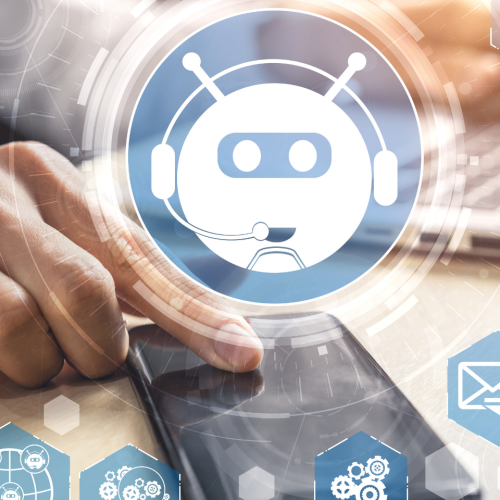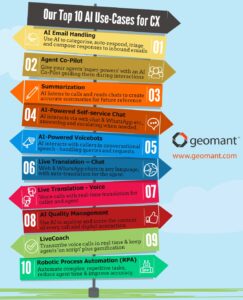The popularity of self-service is growing.
Now that companies are more digitally empowered, with access to smartphones, intelligent assistants, and internet connections, they’re comfortable doing things independently. Indeed, many people became accustomed to this model during 2020, with the pandemic pushing people who hadn’t experimented with self-service options before to explore new models.
Overwhelmingly, the response to new self-service solutions is positive. As chatbots, apps, and other services become more intuitive, 67% of customers say they prefer self-service over speaking to company representatives. A further 75% believe self-service is fast and convenient.
So, what does this trend mean for the contact center? Should companies be replacing their human agents with bots, and eliminating person-to-person support entirely?
Absolutely not. While self-service has benefits to offer, it also has downsides. Giving the best customer experience depends on your company’s ability to offer the right blend of customer empowerment, and guided support.
The Benefits of Self Service for Customers and Companies

In the modern age, self-service promises customers faster solutions to problems, smoother experiences, and reduced need to explain issues to various representatives. Around 70% of customers now expect company websites to include at least some manner of self-service solution, from a knowledgebase to a chatbot-enabled FAQ.
Self-service is rapidly becoming the first choice among customers for certain kinds of interactions. For instance, when you need to update something on your profile, or confirm a subscription renewal, you don’t want to wait for an hour on hold to talk to a professional. A self-service solution:
Saves money
Self-service solutions are always on, always available, and always ready to give your customers the support they need. This reduces the risk of companies missing out on conversions because an agent isn’t available. At the same time, it saves the brand significant money in hiring employees from all over the world to offer around-the-clock support.
Though companies will still need to ensure they have the right number of employees available to handle human interactions, they can reduce the expenses associated with simply “filling the gaps” during periods of peak demand.
Saves time
Digital tools are efficient. Self-service solutions give your customers a faster experience when they need to complete basic tasks. It’s much quicker for a client to check the answer to their question with a knowledgebase than it is to call a team, wait to be transferred to the right agent, and so on. This option for customers to serve themselves also leads to significant time savings for employees too.
When your team members don’t have to waste their time dealing with repetitive tasks, like completing transactions for customers, they can focus on other challenges. This means your staff becomes more productive, efficient, and valuable.
Increases revenue
A self-service solution can actively increase revenue opportunities in a variety of different ways. First, when customers can go through transactions and simple processes by themselves, they’re less likely to change their mind about a purchase. If it’s easy and quick to do something with a self-service solution online, there’s no deliberating to worry about while your client is waiting on the phone.
Tools like bots and AI can also dynamically send messages to customers or suggest upsells and cross-sells during self-service conversations. This simplifies the process of allowing clients to add more products or services to their basket in the moment.
Improved brand reputation
Self-service and automation solutions are an excellent way to reduce costs and increase revenue, but they also demonstrate your company’s ability to stay on the cutting edge. As mentioned above, customers are increasingly expecting to see the latest self-service tools available from their favorite brands. If you’re not offering the same functionality as your competitors, you could start to see churn.
Providing the right kind of self-service experiences with optimized databases and frequently updating FAQ systems will show your audience that you’re listening to their needs.
Enhance decision making and team performance
Automated solutions like bots and AI assistants can also collect information about the interactions with your customers and give them to you in the form of actionable metrics and insights. Collecting this data shows you where you need to continue investing in your technology to drive the best experiences for your clients and team.
The right self-service solutions can empower your staff members by automatically passing information from previous conversations to agents when a client calls a contact center. This provides instant access to relevant data, so agents can personalize the experience.
What’s the Problem with Self-Service?

So, where is the downside to self-service?
Simply put, while self-service solutions are an excellent addition to your CX and CCaaS environment, they can’t thrive on their own. Self-service tools are here to supplement and enhance an existing strategy that offers easy access to excellent human support.
Your customers might want to use self-service systems when they’re asking simple questions or completing basic tasks, but they still need access to human agents in a variety of environments. For instance, your customers still need human guidance when:
- They’re looking for empathy: Automated and self-service solutions can’t deliver the kind of human emotion as a real person. In difficult situations, customers want to feel they’re getting empathy from people who understand their problems. Human beings can understand each other better than machines. Even as the contact center evolves, humans will still find it easier to explain complex topics to other people.
- The tools are complicated: Most self-service solutions are built with usability in mind. However, there are some members of your audience who might not be as tech-savvy as others. For these people, trying to figure out a self-service solution can be worrying and frustrating. If you don’t have an alternative service option available, you risk losing customers who simply can’t handle your tech.
- Bots and self-service are limited: The technology available to support self-service initiatives is growing increasingly impressive and intuitive. However, most AI solutions still can’t resolve complex issues. A bot or intelligent IVR still needs to respond to questions and concerns based on pre-set information and algorithms. If your customer has an issue you haven’t encountered before, a bot won’t be able to solve it.
- Maintenance is an issue: Self-service solutions need to be maintained and frequently updated to be effective. Your organization, its products, and the needs of your customers will change over time. This means you need your self-service database to be constantly up-to-date and ready to solve new issues. The demand to constantly look after an AI solution can be too much to handle in some small businesses.
- Creativity is key: Human beings are capable of creative problem solving and innovation beyond the abilities of any bot or machine. With teams connected on the right collaborative backend, it’s possible to come up with fantastic solutions to complex problems. This kind of innovation isn’t possible for bots.
Human agents still possess skills and emotional abilities that bots can’t replicate. Some customers will simply refuse to deal with a bot at all, and many don’t like the idea of self-service even now.
Can Self-Service Replace Guided Support?

Self-service solutions represent excellent opportunities for some companies. The right solution means that you can guide your customers through solving a problem or completing a purchase faster. A well-designed environment will boost your brand reputation, improve your NPS rating, and even give you new ways to connect with your clients. However, self-service can’t replace human expertise.
Today’s customers still need access to empathetic, creative sales professionals and service representatives, capable of thinking outside of the box. When a customer is frustrated or upset, they don’t want to deal with a bot that can’t understand their needs. These clients want to talk to a live agent capable of instantly addressing the problem. With that in mind, self-service solutions should only ever be implemented with the option to accelerate a conversation to a human agent.
Intelligent routing systems which connect bots to contact center tools are a valuable choice. This will often allow customers to request that a conversation be sent to an agent by clicking a button or speaking a word on the phone. The bot can then transfer the conversation to the right agent based on the keywords mentioned in the previous conversation.
While bots can definitely improve the experience for both customers, and agents that need to take over a conversation, they’re only one part of the full CX strategy.
Self-service might be a valuable next step for your company, but it shouldn’t come at the expense of empowered, informed, and empathetic human agents.











